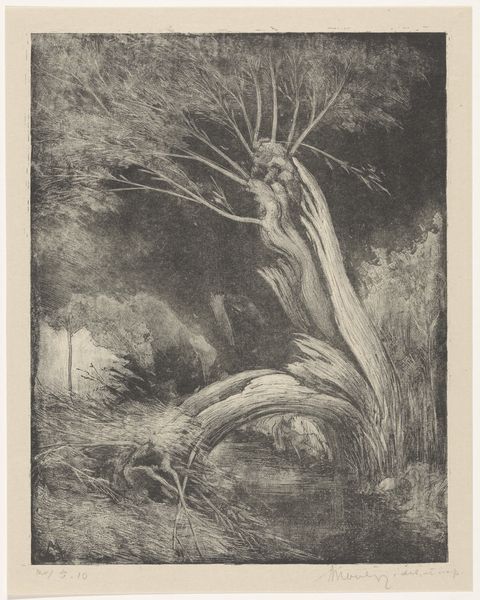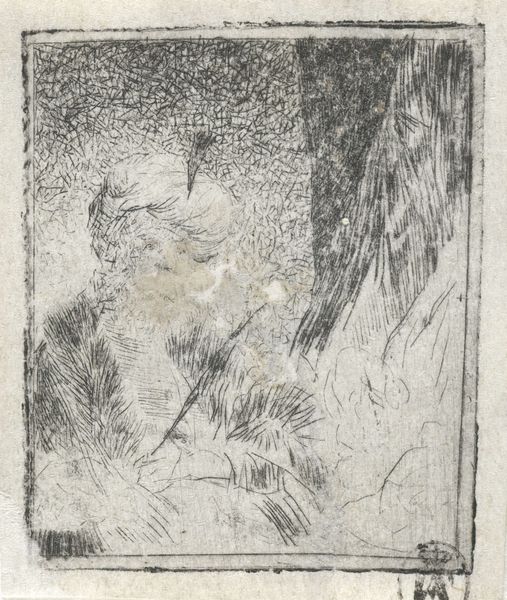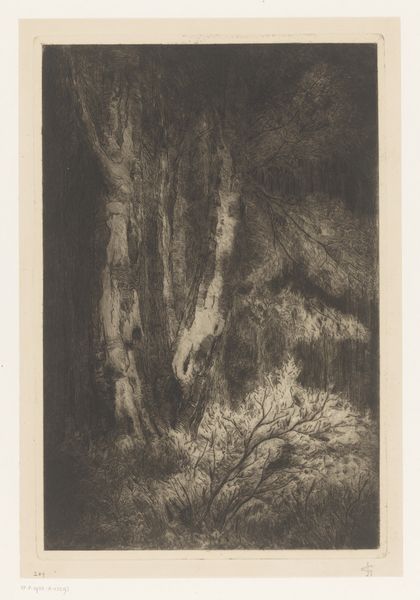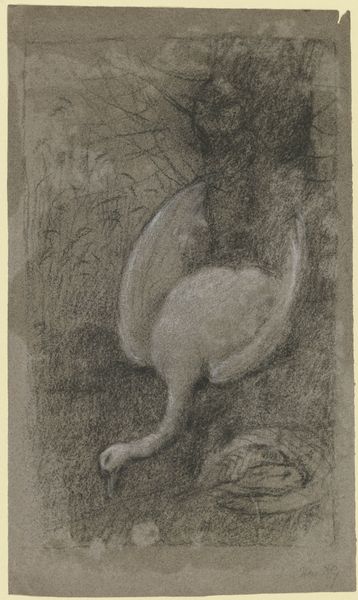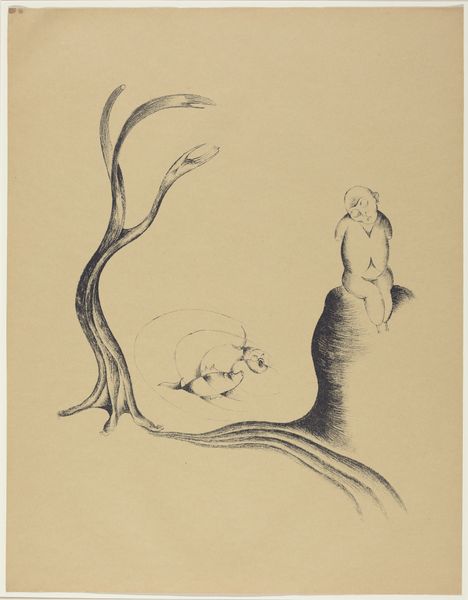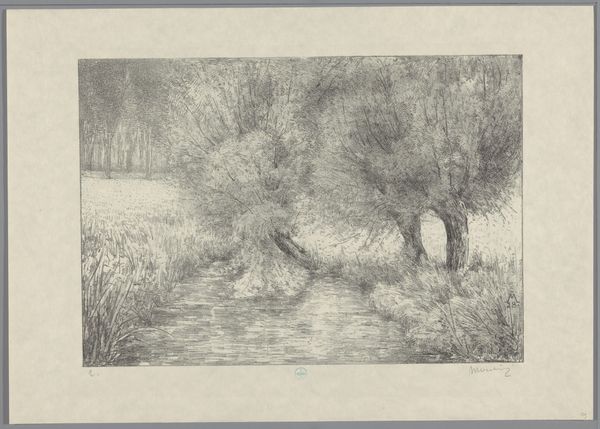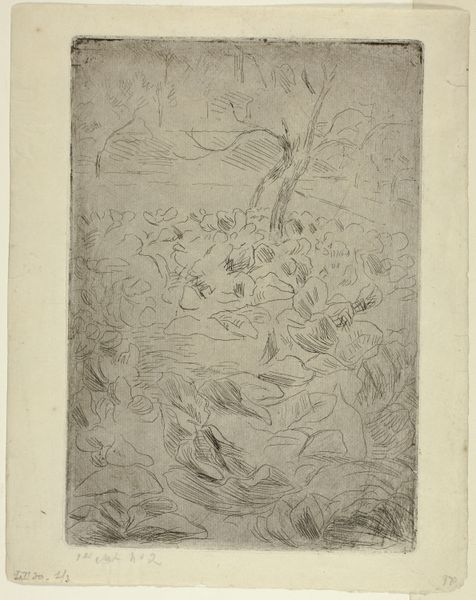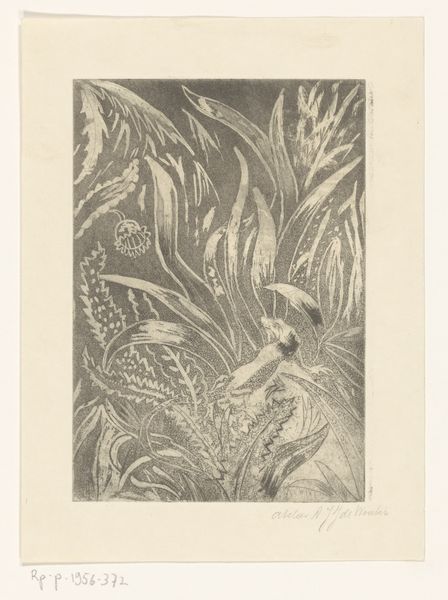
Dimensions: height 423 mm, width 299 mm
Copyright: Rijks Museum: Open Domain
Curator: We’re looking at Simon Moulijn’s 1923 pencil and graphite drawing titled "Wilg bij sloot," which translates to Willow by Ditch, currently residing here at the Rijksmuseum. Editor: There’s a hushed quality to this piece. The limited palette really accentuates the stark, almost lonely feel of the willow against the water. It gives an austere emotional quality, and the pencilwork has a really interesting tactile energy, almost like you can feel the bark. Curator: Indeed, the focus here isn't necessarily on replicating the scene, but rather interpreting the light and the texture through expressive strokes. This was a common sentiment with the Hague School artists that he was influenced by. They were interested in everyday subjects from Dutch life. This is less a portrait of nature than an exploration of mood, specifically a melancholy one. Editor: That focus on a ‘sense of place’ really comes through, and knowing its placement in the Hague School tradition illuminates some of that reserved quality you mentioned. In the 1920s, after the devastation of World War I, you see a lot of artists trying to grapple with the changing social fabric. Do you think Moulijn was trying to capture some essence of Dutch resilience and how it connected to landscape in the face of upheaval? Curator: That’s a thoughtful reading. Moulijn's works are tied to his commitment to represent working-class people. And even here, in what appears to be a simple landscape, there's a reminder of the labor required to manage waterways and maintain this natural landscape. So the work is silent but, in reality, quite political. Editor: Yes, it does underscore how constructed our idea of a "natural" scene actually is. This controlled and ordered view is inherently political, then. It speaks to how power operates even within something that seems still and serene, which I find a little unnerving, but very much thought-provoking. Curator: Absolutely, there’s something subtly powerful about this quiet observation. I will see this landscape from a new vantage point going forward. Editor: And it reminds me of how landscape isn't merely background but actively shapes us and is shaped by the social and historical currents surrounding it. It’s been so informative speaking with you today.
Comments
No comments
Be the first to comment and join the conversation on the ultimate creative platform.
